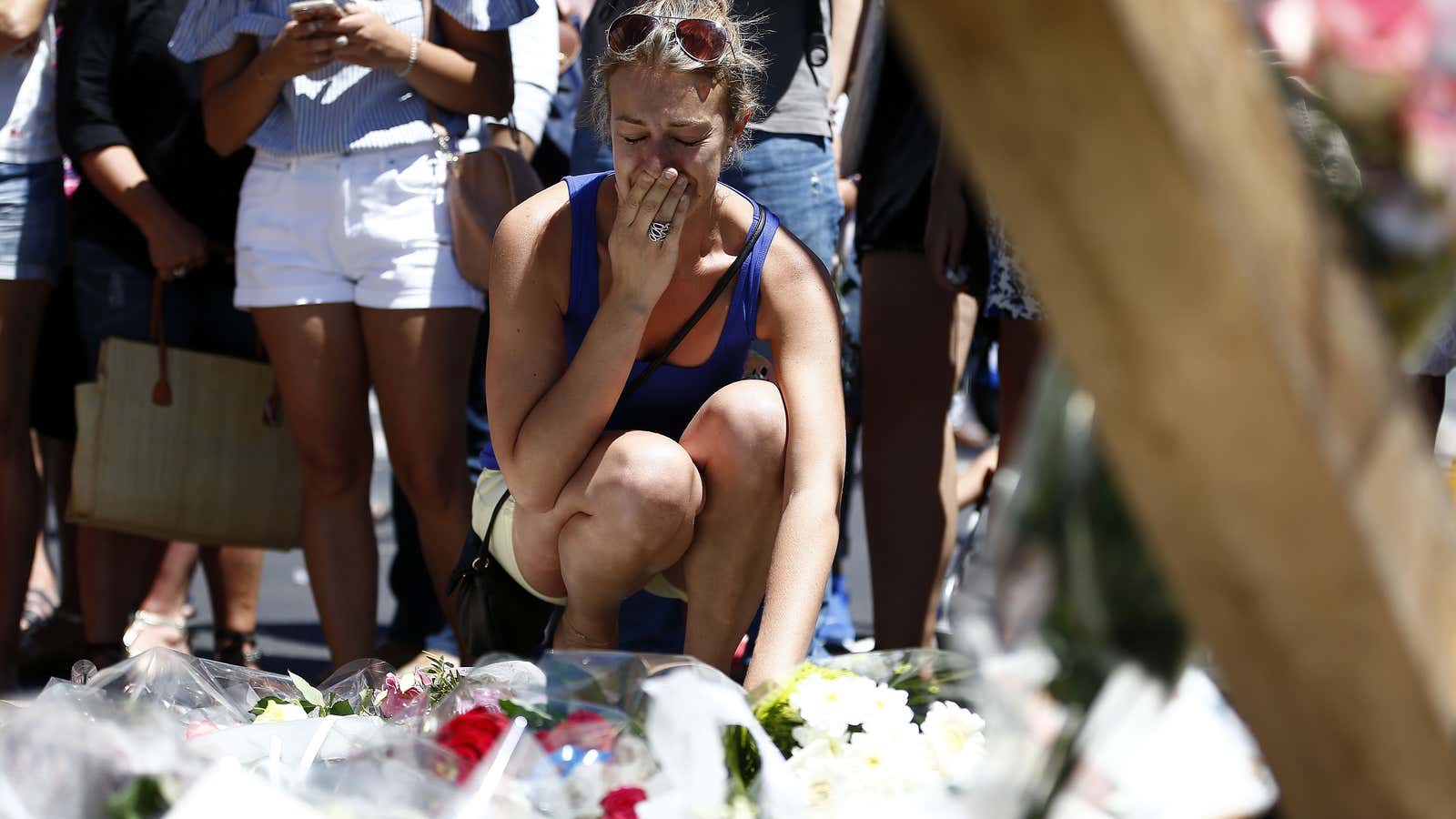After a series of explosions and gunfire rocked the capital city of Paris and left nearly 150 people dead last November, the French government had announced an app to alarm and update people within 15 mins of any such activity occurring. SAIP (Système d’alerte et d’information des populations) released the app last month.
Last night (July 14) at around 10:45pm, a truck plowed through a crowd celebrating Bastille Day at Nice’s beachfront, killing 84 people and injuring hundreds more. In the immediate aftermath, the app remained silent. The government first issued an alert after 1:30am—almost three hours later.
Since SAIP relies on internet data for smartphones, digital LaFonderie’s hacker-in-residence Gaël Musquet had already warned of vulnerabilities arising over 3G, 4G and wifi that are potentially vulnerable, according to French newspaper Libération (link in French). ”When there are too many phones in a certain area and not enough channels available to route all calls, cell towers are saturated and they cannot respond,” Musquet told the paper.
Friends and family of victims turned to social media after the attack. Facebook was quick to activate its Safety Check feature. Twitter hashtags #RechercheNice (#SearchNice) and #NiceFindPeople were being used to locate missing people. A French Secretary of State, Axelle Lemaire, encouraged people to use Facebook to check on their loved ones, while the French government has largely kept mum about the failure.
The Interior Ministry did not respond to our request for comment. However, a journalist for French daily newspaper Les Echos took to Twitter to report that a government source had disclosed that the app experienced technical difficulties post the deadly attack.
